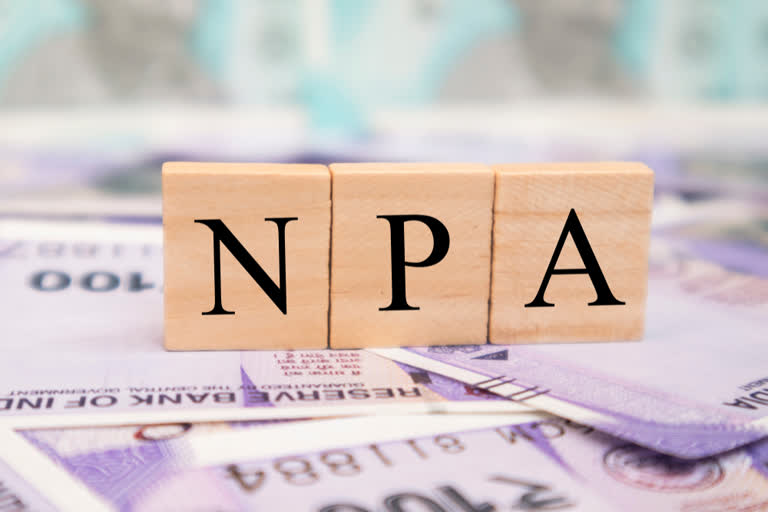New Delhi: The Union Cabinet chaired by Prime Minister Narendra Modi Wednesday approved a Rs 30,600 crore for bank security receipts to be issued by a newly set up specialised institution for acquiring bad loans.
In her budget speech in February this year, Finance Minister Nirmala Sitharaman had announced the government's intent to set up a specialised institution to aggregate bad loans, a national asset reconstruction company, popularly known as a bad bank as it will acquire non-performing assets (NPAs) or bad loans of banks.
Debasish Panda, Banking and Financial Services Secretary, Thursday told the reporters that the NARCL has already been incorporated. NARCL proposes to acquire stressed assets of about Rs 2 Lakh crore in a phased manner under the existing guidelines of the Reserve Bank of India.
It intends to acquire these bad loans through 15% Cash and 85% in Security Receipts (SRs).
Problem of legacy NPAs
According to the latest official data shared by the government in Parliament in July this year, the gross non-performing assets or bad loans of public sector banks increased from Rs 2.17 lakh crore in March 2014 to Rs 8.96 lakh crore in March 2018, within the first four years of Prime Minister Narendra Modi's term.
The government said it was due to transparent recognition NPAs and since then the NPAs of public sector banks have declined due to the four-pronged strategy adopted by the government which involves recognition, resolution, recapitalisation and reform.
As per the latest provisional data, the gross NPAs of government banks declined to Rs 1.97 lakh crore at the end of March this year.
Solution: A national asset reconstruction company (NARCL)
NARCL has been incorporated under the Companies Act and has applied to the Reserve Bank of India for a license as an Asset Reconstruction Company (ARC).
Also read:Proposed ARC will not 'jeopardise' existing players: RBI Guv
NARCL has been set up by banks to aggregate and consolidate stressed assets for their subsequent resolution. Public sector banks will have majority ownership at 51% in the new company.
India Debt Resolution Company Limited (IDRCL)
In addition to setting up a separate asset reconstruction company – NARCL, the government has also set up a separate debt resolution company called India Debt Resolution Company Limited (IDRCL).
It is a service company that will manage the asset and engage market professionals and turnaround experts. Unlike, NARCL where public sector banks hold a majority stake, government banks and financial institutions will hold a minority stake in this company. Their sharehold has been capped at 49% while the rest will be with private sector banks and financial institutions.
Why Govt created NARCL and IDRCL?
It's a natural question that one should ask as there are already more than two dozen private asset reconstruction companies. However, these 28 private ARCs were not able to take up bad loans of large value.
These companies hesitated in acquiring those bad loans where the outstanding amount may run into tens of thousands of crore or even more. Also, in order to solve the problem of legacy NPAs, an alternative mechanism was needed to handle large non-performing assets.
Finance minister Nirmala Sitharaman said the government decided to set up a national asset reconstruction company as private reconstruction firms hesitated to come out with that kind of number.
Why was sovereign guarantee needed?
Given the huge amount of non-performing assets of public sector banks, the view within the government was that a resolution mechanism of this nature to deal with legacy bad loans required a backstop or support from the government.
“This imparts credibility and provides for contingency buffers. Hence, the Government of India Guarantee of up to Rs 30,600 crore will back Security Receipts (SRs) issued by NARCL.
